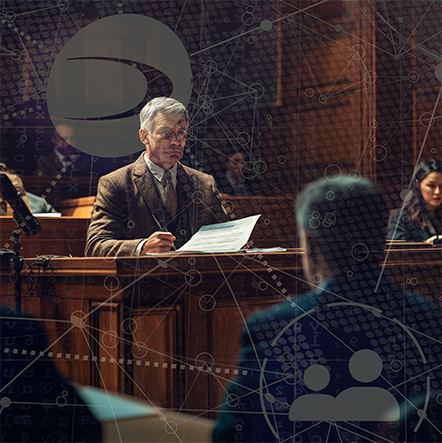Enhancing Courtroom Understanding with Expert Construction Witnesses and Visual Aids
Expert construction witnesses and visual aids play pivotal roles in courtroom proceedings, especially in cases involving technical complexities. These tools are indispensable for legal professionals seeking to communicate intricate construction-related issues to judges and juries. This blog explores how expert construction witnesses assist in litigation, the effectiveness of visual aids in such cases, the legal considerations for their use, and the standards governing their admissibility.
The Role of Expert Construction Witnesses in Litigation
Expert construction witnesses provide essential insights that help courts understand complicated construction disputes. These professionals bring specialized knowledge that can clarify technical details, analyze evidence, and offer informed opinions on key issues.
Explaining Complex Construction Concepts
One of the primary roles of expert construction witnesses is to demystify complex construction processes for the court. Construction projects often involve technical language and concepts that may be difficult for a layperson to understand. An expert can break down these complexities into more digestible terms, aiding the court in making informed decisions.
Offering Professional Opinions
Expert construction witnesses are often called upon to provide professional opinions on construction standards, project execution, and adherence to industry best practices. These opinions can be critical in determining liability, particularly in cases involving construction defects, delays, or contract disputes.
Analyzing Evidence
Construction disputes frequently involve large volumes of documents, including blueprints, contracts, and inspection reports. Expert witnesses analyze these materials, highlighting discrepancies or areas of concern that may not be immediately apparent to those without construction expertise.
Conducting Tests or Experiments
In some cases, expert witnesses may perform tests or experiments to support their testimony. For instance, an expert might recreate a construction scenario to demonstrate how a structural failure occurred. Such demonstrations can be powerful in convincing a jury of the validity of an expert’s conclusions.
Rebutting Opposing Experts
Expert witnesses also play a critical role in countering the testimony of opposing experts. By pointing out flaws or inconsistencies in the other side’s arguments, an expert witness can help the court assess the credibility of competing claims.
The Importance of Visual Aids in Construction Litigation
Visual aids are invaluable in litigation, particularly in cases involving technical or complex issues. They enhance the clarity of expert testimony and can significantly impact the court’s understanding of the case.
Types of Effective Visual Aids
There are several types of visual aids commonly used in construction litigation. Each type serves a specific purpose and can be tailored to the needs of the case.
Diagrams and Technical Illustrations
Diagrams and technical illustrations are effective tools for explaining complex systems or processes. These can range from simple sketches of structural elements to detailed engineering schematics that show how a failure occurred.
Photographs and Videos
Photographs and videos provide visual evidence of construction sites, defects, and project progress. They can be particularly compelling when used to show before-and-after conditions or to document a sequence of events.
3D Models and Animations
Three-dimensional models and animations are powerful tools for visualizing how structures are supposed to function or for recreating events that led to a construction failure. These tools can help the jury grasp the spatial and structural aspects of the case.
Timelines
Visual timelines are useful for illustrating the sequence of events in a construction project. They can clarify critical paths, highlight delays, and show the impact of specific actions on the overall project timeline.
Charts and Graphs
Charts and graphs are essential for presenting data trends, cost comparisons, or schedule deviations in a way that is easy to understand. They are particularly useful in cases involving financial disputes or project management issues.
Maps and Site Plans
Maps and site plans can be used to show spatial relationships, property boundaries, or the layout of a construction site. These visual aids are crucial in cases involving land disputes or environmental issues.
Legal Standards and Rules Governing Visual Aids
Visual aids play a crucial role in aiding courtroom understanding, but their use is governed by strict legal standards. Attorneys must ensure that visual aids are relevant, accurate, and properly authenticated to be admissible in court.
Federal Rules of Evidence
The Federal Rules of Evidence set clear guidelines for the use of visual aids. Key rules include:
- Rule 401: Relevance of Evidence This rule defines relevant evidence as that which makes a fact more or less probable than it would be without the evidence. For visual aids, this means they must directly relate to the case and aid in understanding key issues.
- Rule 403: Balancing Probative Value and Prejudicial Impact Even if evidence is relevant, Rule 403 allows its exclusion if its probative value is substantially outweighed by the risk of unfair prejudice, confusion, or misleading the jury. This rule is crucial for visual aids, which must clarify evidence without unduly influencing the jury.
- Rule 901: Authentication of Evidence Rule 901 requires that evidence must be authenticated before being admitted. This means there must be proof that the visual aid accurately represents what it purports to show, often through expert testimony.
Case Law and Jurisdictional Differences
Different jurisdictions may have varying standards and precedents regarding the admissibility of visual aids. Understanding these differences is essential to ensure that visual aids meet legal requirements.
Foundation and Authentication
Visual aids must be properly authenticated to confirm that they accurately represent the information they depict. This typically involves testimony from an expert who can verify the visual aid’s accuracy and relevance.
Relevance and Fairness
Courts evaluate whether a visual aid is relevant to the case and whether its probative value outweighs any potential prejudicial effect. Visual aids should help clarify evidence without unduly influencing the jury.
Disclosure Requirements
Visual aids that support expert testimony must be disclosed to the opposing party as part of the discovery process. This ensures that both sides can review and challenge the visual aids before they are presented in court.

Best Practices for Expert Witnesses Using Visual Aids
For expert witnesses, the effective use of visual aids can significantly enhance the impact of their testimony. However, it is essential to follow best practices to ensure that these aids are both effective and admissible.
Keep It Simple
Simplify complex information with visual aids rather than adding confusion. Design them to make the expert’s testimony clearer and more understandable.
Ensure Accuracy
Use accurate visual aids to maintain credibility. Inaccurate or misleading visuals can damage an expert’s credibility and may be excluded from evidence.
Make It Relevant
Ensure every visual aid has a clear purpose related to the expert’s testimony. Irrelevant visuals can distract from the main points and may confuse the jury.
Practice with the Visuals
Experts should practice integrating visual aids into their testimony smoothly. This preparation helps avoid technical difficulties and ensures a polished presentation.
Have Backup Options
Prepare low-tech backup options, such as printed handouts of key visuals, to avoid disruptions in testimony if technical issues arise.
Conclusion
Expert construction witnesses and visual aids are critical components of successful litigation. By explaining complex concepts, analyzing evidence, and effectively using visual aids, expert witnesses can significantly enhance the clarity and impact of their testimony. Adhering to best practices and legal standards ensures that these tools are used effectively and admissibly, ultimately aiding the court in reaching just decisions.
As construction disputes continue to grow in complexity, the role of expert witnesses and the strategic use of visual aids will only become more important. By staying informed of the latest developments in these areas, legal professionals can better serve their clients and improve outcomes in construction litigation.
This blog has covered the essential aspects of using expert construction witnesses and visual aids in court. By following the guidelines outlined here, legal professionals can leverage these tools to build stronger, more persuasive cases.
Final Thoughts
Various rules and precedents must be carefully navigated in legal landscape when considering the use of visual aids is complex. As technology evolves, so too will the standards for admissibility, making it crucial for legal professionals to stay informed of the latest developments. By understanding the legal standards and preparing thoroughly, attorneys can leverage visual aids to their full potential, improving their chances of success in the courtroom.
Read more from others:
- National Institute of Justice. (2023) | Evaluation and Use of Visual Aids
- Slaw.ca. (2024)| Effective Use of Visual Aids in Mediation
- Langhenry, Gillen, Lundquist & Johnson, LLC | Use of visual aids at trial: guidelines regarding admissibility
Are you an Attorney?
We’re here to help! Let us connect you with qualified professionals who are available for depositions and testimonies. Our database includes over 15,000 experts with a wide range of specialties. Reach out today to fast-track your search for an expert witness.
Are you an expert?
Join a thriving community of over 15,000 experts at Expertinfo.com, where your knowledge is valued and your expertise makes a difference. With 40 years of experience in connecting experts like you with attorneys who need your specialized skills, we’re dedicated to facilitating successful collaborations. Don’t miss the opportunity to impact critical legal cases and expand your professional network. Reach out today and become part of our extensive database of leading experts. Your expertise isn’t just needed—it’s essential. Connect with us now and start making a difference!







